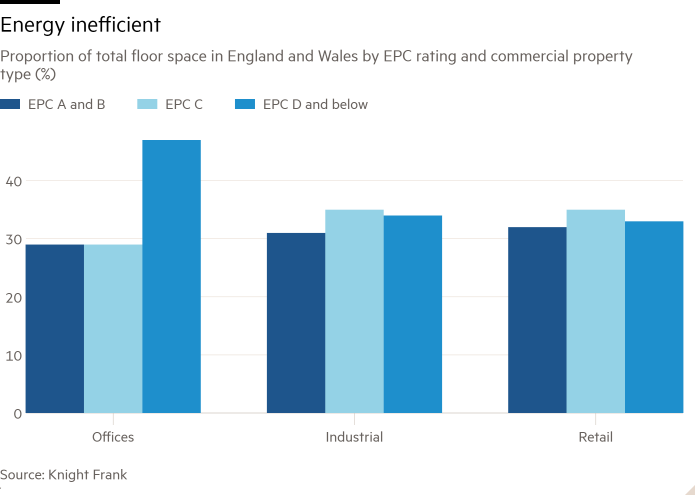Unlock the Editor’s Digest for free
Roula Khalaf, Editor of the FT, selects her favourite stories in this weekly newsletter.
Stranded assets are every property investor’s bête noire. In the past, commercial buildings have fallen out of use largely because of unexpected shifts in habits (think online shopping killing department stores).
But former central banker Mark Carney warned this month that governments’ push towards net zero could lead to “significant” stranded assets. This is where the cost of upgrading buildings to meet energy and emissions specifications would prove too much for the rents they could attract.
Assessing the potential scale of the problem can throw up scary numbers. A 2019 academic study put the potential value at risk globally at $5tn for commercial assets. At least with net zero targets, the threat is predictable. Many governments are setting out staging posts along the path to 2050. Whether all investors are heeding it is another matter.
An early test will be the UK. The market looks ill prepared for a 2030 target that would require commercial buildings to have an “energy performance certificate” rating of at least B, if it is enforced. About 70 per cent of floor space in England and Wales currently has an EPC rating of C or below, estimates Knight Frank.

Assuming a similar percentage for the whole of the UK with the value of non-residential building stock at about £1tn, that could mean some £700bn of value is at risk.
But that would be an overstatement. Refits are picking up and newer buildings are greener. Since the start of 2022, more than a third of EPC issuances have been B or higher, says CBRE. Not every building requires a top-to-bottom overhaul, says Savills’ Steve Page. Some can be improved in stages and let during the process.
Costs cited by listed property companies are modest. British Land said in its annual report it would cost £100mn to improve the 42 per cent of its portfolio that did not already have an EPC rating of A or B by 2030. Two-thirds of that could be recovered through service charges. Land Securities has a £135mn net zero transition plan.
True, bigger listed companies such as Land Securities tend to focus on “prime” office space, which is a small slug of the market, say around 10 per cent. The bigger issue is with lower-tier buildings in undesirable locations — and to what extent private real estate backers and smaller landlords are taking climate risks seriously. Here, there is little visibility.
Net zero costs may also simply heap more pressure on a market that faces other, less predictable challenges. Jefferies’ Mike Prew points to the threats posed by artificial intelligence to workforces and continued hybrid working. Commercial property has more than one bête noire.












